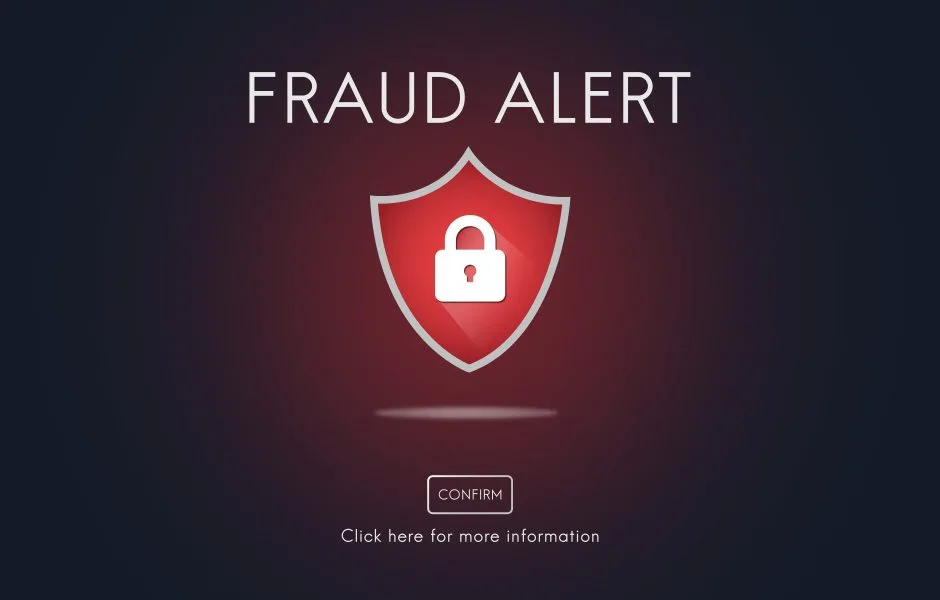Types of eCommerce Fraud
The rising threat of eCommerce payment fraud poses financial and reputational risks. With Radial Payment Solutions, you’re backed by an ironclad fortress that detects and prevents even the most sophisticated forms of digital fraud.
Our top-tier technology is a lifeline in the volatile world of eCommerce — ensuring you stay ahead of malicious threats while enhancing the customer experience.

Ecommerce fraud is a constant threat, lurking in the shadows, ever-ready to undermine your profits, your customer trust, and your peace of mind. But understanding this dark underbelly of the digital marketplace can be the first step towards reclaiming your business security.
To successfully mitigate the adverse effects of online fraud, online merchants must familiarize themselves with the intricacies of various fraudulent practices. This task is far from trivial; the spectrum of fraudulent tactics is extensive and their manifestation often sophisticated. Nonetheless, acquiring a comprehensive knowledge of the various types of eCommerce fraud and understanding their operational methods is crucial for both prevention measures and remediation strategies.

The Growing Threat of eCommerce Fraud
The global surge in eCommerce activities has been mirrored by a corresponding rise in online fraud. According to a recent study by Juniper Research, leading experts in the field of payment markets, it is predicted that losses incurred by merchants due to online payment fraud will surpass $362 billion worldwide from 2023 to 2028. The losses in the year 2028 alone are projected to reach an alarming $91 billion. These eCommerce fraud statistics indicate a substantial and accelerating threat that online retailers must address.
Moreover, the implications of eCommerce fraud are far-reaching. Not only do businesses stand to incur significant financial losses, but they also face the erosion of customer trust — a vital element in the online marketplace. In an environment where trust and security significantly influence consumer behavior, the indirect costs of fraud through loss of customer loyalty and brand reputation can be as impactful as the direct financial damage.
This data underscores the imperative for businesses to understand the diverse types of eCommerce fraud they may encounter and to arm themselves with effective strategies for detection and prevention. The journey to secure eCommerce operations starts with understanding the enemy.
13 Types of eCommerce Fraud
Fraud in the eCommerce sector manifests in various forms, each with unique characteristics, methods, and potential impacts. Let’s examine some of the most common types of eCommerce fraud.
1. Credit Card Fraud
One of the most prevalent types of eCommerce fraud is credit card fraud, which occurs when an individual uses another person’s credit card information to make unauthorized purchases or to steal funds. This type of fraud has been prevalent since the inception of credit cards but has grown substantially with the rise of eCommerce, where physical cards aren’t required for transactions.
Typically, criminals use tactics such as phishing, data breaches, or even physical theft of the card to acquire the credit card information. Online, they might also employ methods like distributed denial of service (DDoS) attacks or set up fake WiFi networks to intercept credit card details.
2. Identity Theft
Identity theft refers to a type of fraud where a fraudster impersonates another individual by stealing and using their personal information, such as names, billing addresses, social security numbers, or banking details. In eCommerce, this can lead to unauthorized online purchases, opening of new credit accounts, or even filing fraudulent tax returns in the victim’s name.
Identity thieves use a variety of methods to acquire personal information. Phishing attacks and data breaches are among the most common. They may also use social engineering tactics, manipulating people into voluntarily giving up their information, often without realizing the implications.
3. Chargeback Fraud
Chargeback fraud, also known as first party fraud, occurs when a legitimate customer makes an online shopping purchase with their credit card and then requests a chargeback from the issuing bank after receiving the purchased goods or services. They may claim that they never received the item or that their credit card was used without their permission. This results in the eCommerce merchant losing both the sales revenue and the product while also having to pay chargeback fees.
4. Account Takeover Fraud
Account takeover fraud is a form of identity theft where a fraudster gains unauthorized access to a victim’s user account. The attacker can then make fraudulent purchases, change shipping addresses, or even steal sensitive customer data. Tactics used to accomplish this can include phishing, using malware, or exploiting data breaches.
5. Phishing and Social Engineering
Phishing and social engineering fraud involve manipulating individuals into providing sensitive information, such as usernames, passwords, and credit card details. Often this is done through deceptive emails or websites that appear to be from reputable companies but are actually set up by fraudsters to trick people into revealing their information.
6. Triangulation Fraud
Triangulation fraud is a sophisticated form of eCommerce fraud that involves three parties: the fraudster, the unsuspecting legitimate buyer, and the online retailer. Here’s how it works: the fraudster sets up a fake online storefront that sells items at very low prices.
When a legitimate buyer makes a purchase, the fraudster uses stolen credit card data to buy the same item from a genuine eCommerce store and have it shipped to the buyer’s address. In the end, the legitimate buyer gets their product, the real eCommerce store makes a sale, but the credit card owner becomes a victim of fraud.
7. Refund Fraud
In refund fraud, the fraudster pretends to be a customer who wants to return a product for a refund. The scammer may claim to have sent the product back and ask for a refund, even though they haven’t.
In other cases, the scammer uses stolen credit card information to purchase a product, then contacts customer service to report the product as faulty. The scammer requests a refund, while the product (which was never faulty to begin with) is sold elsewhere.
8. Clean Fraud
Clean fraud involves a fraudster who has enough stolen information to perfectly impersonate a cardholder, bypassing all the typical fraud detection flags. Because the transaction appears legitimate, it’s approved. It’s only when the real cardholder notices the fraudulent charge on their statement that the fraud comes to light.
9. Coupon Abuse
In this type of eCommerce fraud, consumers or fraudsters exploit coupon codes and promotions to receive discounts they aren’t entitled to. This may involve using a single-use coupon multiple times, creating multiple customer accounts to take advantage of a ‘new customer’ discount repeatedly, or using bots to find and use unpublished promotional codes.
10. Interception Fraud
Interception fraud occurs when a fraudster places an order with a stolen credit card and then intercepts the package before it reaches the cardholder’s address. This can be achieved by contacting the courier and asking them to reroute the package, or by physically taking the package from the cardholder’s property.
11. Merchant Identity Fraud
In merchant identity fraud, scammers create a fake eCommerce site that looks just like a legitimate one. When customers make a purchase on the fraudulent site, they provide their credit card information, which the scammer then uses to make fraudulent transactions.
12. Affiliate Fraud
Affiliate fraud is a type of eCommerce fraud where fraudulent affiliates generate fake clicks, leads, or sales to earn commission they’re not entitled to. This type of fraud can be hard to detect and can result in significant losses for the merchant.
13. Return to Sender Fraud
This type of fraud happens when the scammer makes a purchase, and after the tracking number is issued, they contact the carrier and have the item rerouted back to them. This results in them having the product and the refund from the vendor, as they claim the product was never delivered.

Identifying Fraudulent Activities: 6 Red Flags
As eCommerce continues to expand, it’s crucial for businesses to recognize the signs of potential fraudulent activities. Early detection of these red flags can save a significant amount of money and resources. Let’s explore several key indicators of fraudulent activity and discuss how to differentiate between genuine and fraudulent transactions.
1. Frequent Large Purchases
One common red flag is when an account suddenly starts to make frequent large purchases, significantly deviating from its usual behavior. Cybercriminals, particularly those engaged in credit card fraud, often aim to maximize the value they extract from the stolen information before the card is reported and blocked.
2. Multiple Orders Shipped to the Same Address
If you notice multiple orders from different user accounts or credit cards being shipped to the same address, it may indicate a fraudster is using stolen card information to purchase goods. This can often be a sign of identity theft or credit card fraud.
3. Rapid Fire Transactions
If several transactions are attempted in quick succession from the same IP address, this might be card testing fraud in which a fraudster tests multiple stolen credit card numbers to see which ones are still active and not yet reported.
4. Multiple Failed Payment Attempts
Another common signal is a series of failed payment attempts. This typically happens when fraudsters are trying to guess card information or use stolen data that’s outdated or incorrect.
5. Orders From High-Risk Countries
Certain countries are known to have higher rates of fraudulent transactions. If you’re receiving an unusually high number of orders from such regions, it might be worth a closer look.
6. Unusual Account Activity
Signs of unusual account activity can include changes in password, shipping, or billing information. An account that is suddenly shipping to a new address or has changed its password multiple times in a short period might have been taken over by a fraudster.

Distinguishing Genuine from Fraudulent Transactions
Differentiating genuine transactions from fraudulent ones can be challenging, particularly as fraudsters become more sophisticated. However, there are some strategies eCommerce businesses can employ, such as:
1. Use of Fraud Detection Tools
Employing automated fraud detection tools can help identify fraudulent transactions in real-time. These tools analyze patterns and data points to determine the likelihood of a transaction being fraudulent. This can include analysis of customer behavior, IP geolocation, device identification, and more.
2. Manual Review
In some cases, it may be beneficial to manually review transactions, particularly those flagged by fraud detection tools. This allows for a more in-depth investigation and can help prevent false positives.
3. Verification Processes
Adding additional verification processes can help confirm the legitimacy of a transaction. This could include two-factor authentication, phone number verification, or requiring the CVV for credit card transactions.
4. Customer Communication
Sometimes, reaching out to the customer can help determine the authenticity of a transaction. If an order seems suspicious, a quick call or email to the customer can confirm whether they made the purchase.
5. Use of AI and Machine Learning
AI and machine learning technologies are becoming increasingly effective at fraud protection. They can analyze vast amounts of data and learn to identify patterns and signals that are indicative of fraud.
eCommerce Fraud Prevention Strategies
Understanding and identifying the signs of fraudulent activities can significantly reduce the likelihood of falling victim to these scams. Implementing robust and comprehensive eCommerce fraud protection strategies is vital in mitigating the risks of eCommerce fraud.
Ensuring that your payment systems and gateways are secure is an essential first step. Choose reputable payment processors that prioritize security and have built-in fraud detection mechanisms. Ensure that your chosen payment gateway is PCI-DSS compliant, an industry security standard that helps prevent fraud.
Data Encryption and Secure Sockets Layer (SSL) Certification
Data encryption and SSL certification are crucial for protecting sensitive customer information during transmission. SSL certificates create an encrypted connection where information is shared securely, protecting against data breaches that could result in fraud.
Fraud Detection Software and AI Solutions
Utilizing fraud detection software and AI can help identify and prevent fraudulent activities before they happen. These technologies can analyze patterns in customer behavior and transactions, flagging potentially fraudulent activities for further review.
Employee Training and Awareness
Educating your employees about the types and signs of eCommerce fraud can be an effective preventive measure. Training should include how to recognize suspicious activity and the appropriate actions to take when fraud is suspected.

Prepare & Prevent Fraud
Understanding and combating eCommerce fraud trends is a critical necessity for businesses operating in the digital marketplace. As eCommerce continues to grow, the threat of fraud evolves alongside it, making vigilance and proactive fraud prevention strategies imperative.
eCommerce fraud can take many forms, each with unique tactics and potential impacts. However, by understanding the different types of fraud, recognizing the red flags, and implementing comprehensive fraud prevention strategies, businesses can protect themselves and their customers.
In an ever-evolving digital landscape, it’s crucial to stay one step ahead. Therefore, businesses are strongly encouraged to review their current fraud prevention strategies and consider implementing robust measures, such as secure payment systems, data encryption, AI-powered fraud detection software, and employee training, to ensure a safe eCommerce environment.
By securing your eCommerce operations, you not only protect your business but also enhance customer trust, contributing to a positive customer experience and, ultimately, driving success.
Radial can help you prevent fraud.
